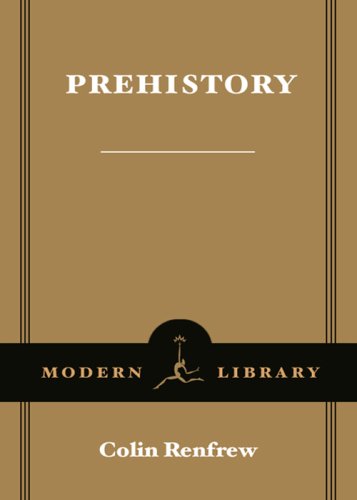
Prehistory
The Making of the Human Mind
کتاب های مرتبط
- اطلاعات
- نقد و بررسی
- دیدگاه کاربران
نقد و بررسی

July 14, 2008
In this complex, closely argued text, best suited to archaeology professionals, field giant Renfrew sets forth quite a task, to sum up the progress of prehistoric archaeology thus far and then explore current challenges. In Part I, Renfrew surveys the history of the concept-prehistory refers to the long period of "human existence before... written records"-and how it developed into a rich field of study, developing excavation and chronological techniques and coming to major, sometimes startling conclusions (like the parallel evolution of distant cultures throughout the world). Part II considers the prehistory of the human mind-that is, how concepts such as relative value and social rank came into being. In a compelling but debatable argument, he finds that sedentarism-permanent residence in one place-was a pre-requisite for the emergence of material culture. Ultimately, however, "good local narratives" can be compiled for societies such as ancient China, Mesopotamia, Egypt and Mesoamerica, but a unifying model that encompasses their individual trajectories has yet to be developed; Renfrew regards its development as a major task for 21st century prehistorians. The value of Renfrew's book is that it lays out these arguments, with the intent to spur thought, debate, analysis and, especially, theoretical modeling of social evolution.

June 30, 2008
In this complex, closely argued text, best suited to archaeology professionals, field giant Renfrew sets forth quite a task, to sum up the progress of prehistoric archaeology thus far and then explore current challenges. In Part I, Renfrew surveys the history of the concept-prehistory refers to the long period of "human existence before... written records"-and how it developed into a rich field of study, developing excavation and chronological techniques and coming to major, sometimes startling conclusions (like the parallel evolution of distant cultures throughout the world). Part II considers the prehistory of the human mind-that is, how concepts such as relative value and social rank came into being. In a compelling but debatable argument, he finds that sedentarism-permanent residence in one place-was a pre-requisite for the emergence of material culture. Ultimately, however, "good local narratives" can be compiled for societies such as ancient China, Mesopotamia, Egypt and Mesoamerica, but a unifying model that encompasses their individual trajectories has yet to be developed; Renfrew regards its development as a major task for 21st century prehistorians. The value of Renfrew's book is that it lays out these arguments, with the intent to spur thought, debate, analysis and, especially, theoretical modeling of social evolution.
Copyright 2008 Library Journal, LLC Used with permission.

June 1, 2008
Prominent archaeologist Renfrew reviews the fields history and poses questions about its future in this pr'cis. Summarizing archaeologys beginnings, he notes how speculations gave way to factual foundations through the application of systematic and scientific methods of excavation and interpretation. Nothing has been more important than dating with radioactive elements, which, joined by genetic analysis, permits the establishment of a general chronology of human origins. The most profound question to arise from that achievement, Renfrew stresses, is how to explain "the sapient paradox," the lag of 100,000 years between the emergence of anatomically modern human beings and the earliest material traces of symbolic thought. The question in turn opens avenues of contemporary research with jargon-like names such as material engagement theory and cognitive archaeology, the meanings of which Renfrew delivers with estimable clarity. Beefing up such terms with discoveries in exciting archaeological regions such as Central America, Renfrew projects a vibrancy to the contemporary study of the human past prior to literacy that should attract to the subject readers with an intrinsic or potentially professional interest.(Reprinted with permission of Booklist, copyright 2008, American Library Association.)

























دیدگاه کاربران